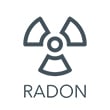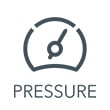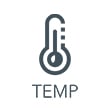How to use Indoor air quality monitoring to boost brand value.
Whether it’s an office or a place to live, people and businesses are becoming more picky about the buildings they choose to rent or buy.
One of the main reasons is that they have become more conscious of how the indoor environment affects health and wellbeing. This comes as no surprise, as we now spend 90% of our time indoors. Increasingly, tenants and employees will demand optimized spaces that improve health rather than diminish it.
 It's also a generational issue. Millennials are typically health conscious, evidenced by the growing value of the global wellness industry, now estimated at $4.2 trillion. Over the next couple of years, millennials will make up more than half of the workforce. Catering to their concerns over the quality of the indoor environment will yield dividends in terms of the desirability of your property.
It's also a generational issue. Millennials are typically health conscious, evidenced by the growing value of the global wellness industry, now estimated at $4.2 trillion. Over the next couple of years, millennials will make up more than half of the workforce. Catering to their concerns over the quality of the indoor environment will yield dividends in terms of the desirability of your property.
Many property owners are already spending more to improve the appeal of their buildings. From 2016 to 2017 there was an 11.2% increase in maintenance spend per location, as companies invested in ensuring their facilities offered the proper conditions for boosting their users' experience.
A healthy indoor environment is now an essential part of building a valuable property brand. And there's one health and wellness factor that leading brands are leveraging to give them the edge – indoor air quality.

Clean air is critical to health. Outdoor air pollution is the number one environmental cause of death, causing approximately 7 million premature deaths worldwide. Indoor air can often be 5 to 10 times worse than outdoor air.
As our outdoor air worsens globally, it is harder to clean our indoor air by simply opening a window – and increasingly buildings are made airtight to comply with environmental and energy efficiency standards. Indoor air quality can be degraded further from within the building by poor ventilation, the number of people using the building at any one time, and off-gassing from furniture, finishes and cleaning products.
There is growing awareness of the importance of indoor air quality. The US market for indoor air quality is predicted to reach $12.2 billion by 2023. Demonstrating good air quality can help you compete as a premium property brand, able to attract valuable tenants who in turn will factor your property's superior wellbeing performance into their own proposition.
What is the most effective and cost efficient way of embedding high indoor air quality quality into your brand?
Evidencing high indoor air quality performance

Indoor air quality can only help you build brand value if you can prove superior quality and performance. The best way to do that is by monitoring it and harvesting the data to support your claims.
These are the five main concerns you need to monitor:
 |
Radon
|
Radon is a naturally occurring invisible gas emanating from the ground. It's all around us, but in different concentrations at different times. Problem is, it's radioactive, so more exposure to higher concentrations over a longer period can have health effects. This is why it's the number one cause of lung cancer among non-smokers.
As its levels fluctuate, to see the full picture you need data from consistent monitoring all year long. That way you can demonstrate that any mitigation steps you've taken are effective.

|
Airborne chemicals (VOCs)
|
Airborne chemicals stands for Volatile Organic Compounds, which are the total amount of any emitted gases with short or long-term health effects. They are emitted from paints, varnishes, finishes and cleaning products.
VOCs can cause serious health effects in both the short and long term. Health effects vary from minor eye, nose and throat irritations all the way to liver and kidney damage or cancer, depending on the level of exposure.
So if you've just had an area refurbished, repainted or recarpeted, increasing the ventilation will help dispel the VOCs they emit. However, VOCs can be reintroduced into the indoor environment from the use of some common materials, including cleaning supplies, air fresheners, pesticides and aerosol sprays.
Monitoring their levels will give you data that will help you prove compliance with legislation designed to ensure building owners take proper steps to diminish the presence of harmful chemicals in indoor air.
 |
Carbon dioxide (CO2)
|
This naturally occurring gas is harmless in small quantities. Every time we breathe out, we emit it. But if you have a room full of people with not much ventilation, eventually you will have high enough concentrations for it to be harmful. This can cause headaches, restlessness and drowsiness.
CO2 levels can climb according to the ventilation rate of the building. Many ventilation systems recycle air to conserve energy, often within airtight buildings. This results in high CO2 concentrations and poor indoor air quality, which have been directly correlated to low productivity, high sick leave and infectious disease transmission.
By tracking the levels of your indoor CO2 you will be able to show that you consistently maintain levels below 1,000ppm – the point at which concentrations become harmful.

 |
Pressure
|
Atmospheric or barometric pressure changes according to the weather. Low air pressure indicates rain is on the way, while high pressure is associated with dry, sunny days.
Monitoring pressure will arm you with the data to take proactive steps towards controlling indoor humidity. Humidity is a strong indicator of a healthy building. When it's too damp, comfort levels decrease while molds that inflame allergies and asthma grow. If it's too dry, you will be encouraging transmission of nasty viruses like influenza, especially if it's cold.
 |
Temperature
|
Regular temperature readings will allow you to find the optimal range for your building's users. The wrong temperature can drastically affect performance and wellbeing at work. With the increase of remote working, employees now expect the same comforts at work as they find at home – and that includes the temperature being just right.
Leveraging the benefits of indoor air quality monitoring to boost your brand

Use your indoor air quality data to build trust and credibility for your brand in the following ways:
Best-in-class compliance
With indoor air quality monitored on a continuing basis you will always be audit ready. Even better, you can clearly demonstrate your ability to consistently maintain compliance with indoor air quality legislation to your tenants and their employees. Not only will it show that health and safety is a top priority, your transparency will boost your credibility for corporate responsibility – your data will prove you are not just paying lip service.
Higher performance will help you meet the criteria to be certified to the valuable building wellbeing standard, WELL. The latest version of the standard requires digital capabilities, so having the right data is essential.
The standard offers a portfolio program, designed to maintain compliance across a number of sites and apply health and wellness strategies at scale. This will help you achieve the consistent standards necessary to building brand value.
Superior building performance
Use your indoor air quality data to make informed decisions around ventilation, temperature and risk mitigation, in order to run an energy efficient, cost efficient and healthy building. Your data will enable you to optimize ventilation in response to changing capacity and room use, and keep the temperature at a comfortable level without the need for constant user complaints.
Monitoring data for indoor contaminants will allow you to take the most cost-effective route to contaminant mitigation – you have the data to prove it worked, so no need to choose the most expensive option up front. It will also help you make better decisions for types of cleaning products and air fresheners, as well as the composition of fixtures and furnishings.
Taking a data-driven approach to indoor air quality will boost building performance while keeping costs down. It will enable you to evidence the root cause of any problem, establish targeted plans for tackling them and then measure the results of your actions to ensure they have been effective. Fixing the problem the first time eliminates the cost of repeat calls and builds your reputation for efficiency.
Tech-enabled smart building
Tenants and their employees increasingly favor technology rich workplaces. For the health conscious and tech-savvy millennials, companies who can offer them the latest smart solutions to promote their comfort, health and wellbeing at work will rank highly as desirable employers.
An indoor air quality monitoring system can be highlighted as a stand out feature to set your building apart as a modern state-of-the-art property with the latest in environmental control technology. Your tenants will be able to factor in your air quality to boost their Employee Value Proposition to attract the best talent. This will help raise your profile as a forward-thinking, progressive brand. You might even be able to start a 'clean working' trend!
 Competitive edge
Competitive edge
Integrate your indoor air quality data into other enterprise systems to analyze it alongside performance indicators such as absenteeism, talent retention, productivity, sustainability targets, and maintenance and energy costs to demonstrate the difference indoor air quality makes to tenants' competitive edge. Evidencing your positive effect on performance will enable you to drive up occupancy rates and charge higher rents. Your indoor air quality data will help you prove your brand value.
Conclusion

The benefits of indoor air quality monitoring are not yet widely recognized, so adopting this technology now will help you get ahead of your competitors and carve out exclusive territory as a high quality premium property brand. With a strong position in the market, you can set the clean air standard for your competitors to follow.
Building valuable brand equity depends on having the right indoor air quality monitoring system. To find out more, come join us at EXPOREAL where we will be showcasing our indoor air quality monitoring technologies.
Takeaways
- People are increasingly aware of how the indoor environment affects their health.
- Employees now expect their workplaces to promote their wellbeing, with Indoor Air Quality growing in importance.
- Key indoor air quality measurements include radon, CO2, TVOCs, pressure and temperature.
- Your indoor air quality data will help you build a premium brand by demonstrating superior
- HSE compliance and building performance.
- Indoor air quality monitoring will enable you to compete as a cutting-edge, premium brand, delivering high ROI in terms of lower costs, higher rents and brand equity.

 Most popular
Most popular

 Radon
Radon



 Radon
Radon
 Radon
Radon


.webp)







